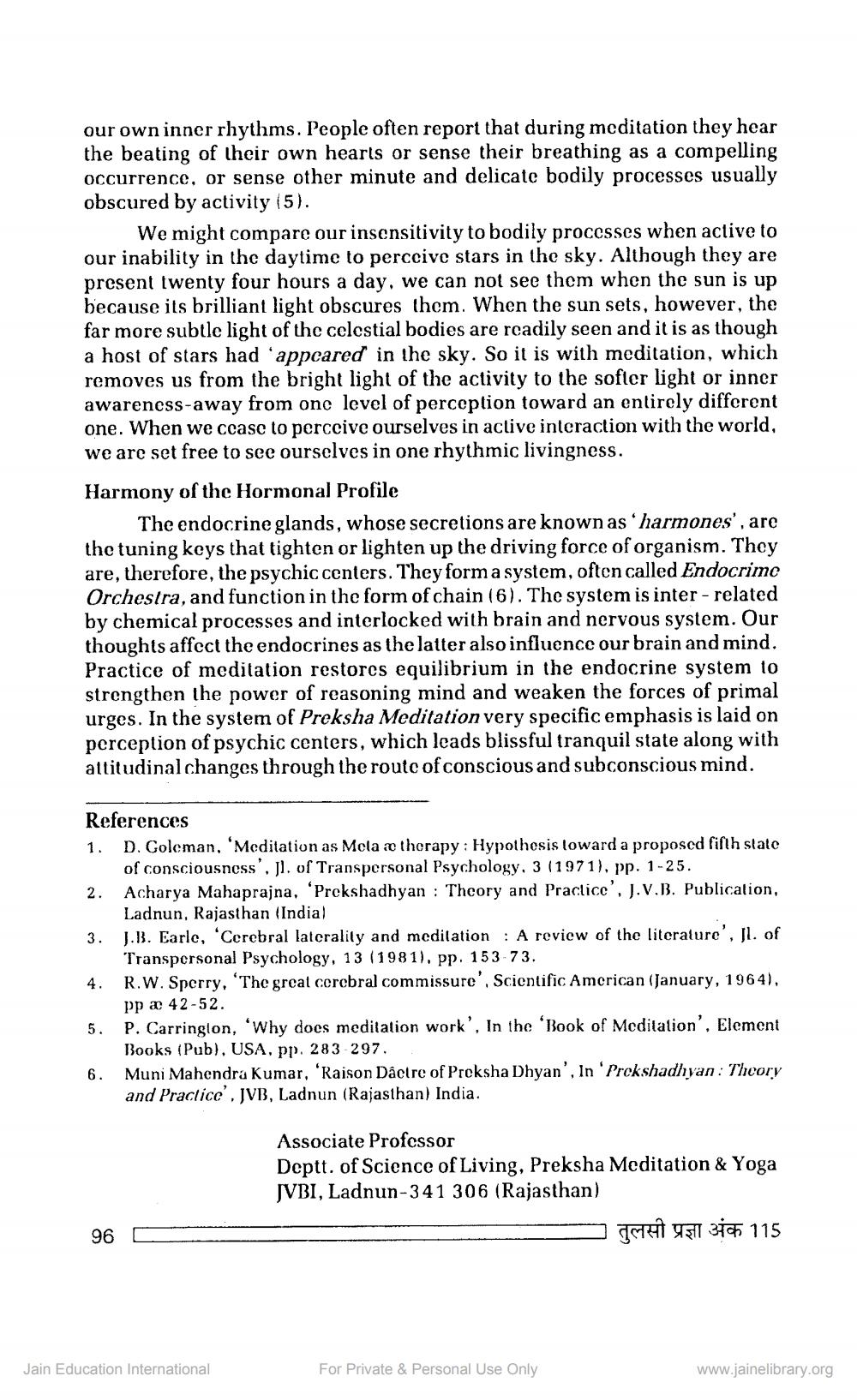________________
our own inner rhythms. People often report that during meditation they hear the beating of their own hearts or sense their breathing as a compelling occurrence, or sense other minute and delicate bodily processes usually obscured by activity (5).
might compare our insensitivity to bodily processes when active to our inability in the daytime to perceive stars in the sky. Although they are present twenty four hours a day, we can not see them when the sun is up because its brilliant light obscures them. When the sun sets, however, the far more subtle light of the celestial bodies are readily seen and it is as though a host of stars had 'appcared in the sky. So it is with meditation, which removes us from the bright light of the activity to the softer light or inner awareness-away from one level of perception toward an entirely different one. When we ccase to perceive ourselves in active interaction with the world, we are set free to see ourselves in one rhythmic livingness.
Harmony of the Hormonal Profile
The endocrine glands, whose secretions are known as 'harmones', are the tuning keys that tighten or lighten up the driving force of organism. They are, therefore, the psychic centers. They form a system, often called Endocrime Orchestra, and function in the form of chain (6). The system is inter-related by chemical processes and interlocked with brain and nervous system. Our thoughts affect the endocrines as the latter also influence our brain and mind. Practice of meditation restorcs equilibrium in the endocrine system to strengthen the power of reasoning mind and weaken the forces of primal urges. In the system of Preksha Meditation very specific emphasis is laid on perception of psychic centers, which lcads blissful tranquil state along with altitudinal changes through the route of conscious and subconscious mind.
References 1. D. Goleman, 'Meditation as Mela c therapy : Hypothesis toward a proposed fifth state
of consciousness'. Jl. of Transpersonal Psychology, 3 (1971), pp. 1-25. 2. Acharya Mahaprajna, 'Prekshadhyan : Theory and Practice', J.V.B. Publication,
Ladnun, Rajasthan (India) 3. J.B. Earlc, Cerebral laterality and meditation : A review of the literature', Jl. of
Transpersonal Psychology, 13 (1981), pp. 153 73. 4. R.W. Sperry, 'The great cerebral commissure', Scientific American (January, 1964),
pp æ 42-52. 5. P. Carringlon, 'Why does meditation work', In the Book of Meditation', Element
Books (Pub), USA. pp. 283-297. 6. Muni Mahendra Kumar, 'Raison Dâctre of Preksha Dhyan', in 'Prokshadhyan: Theory
and Practice', JVB, Ladnun (Rajasthan) India.
Associate Professor Deptt. of Science of Living, Preksha Meditation & Yoga JVBI, Ladnun-341 306 (Rajasthan)
96
C
dit
3105 115
Jain Education International
For Private & Personal Use Only
www.jainelibrary.org




